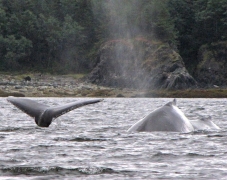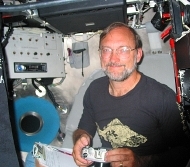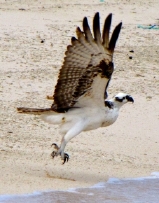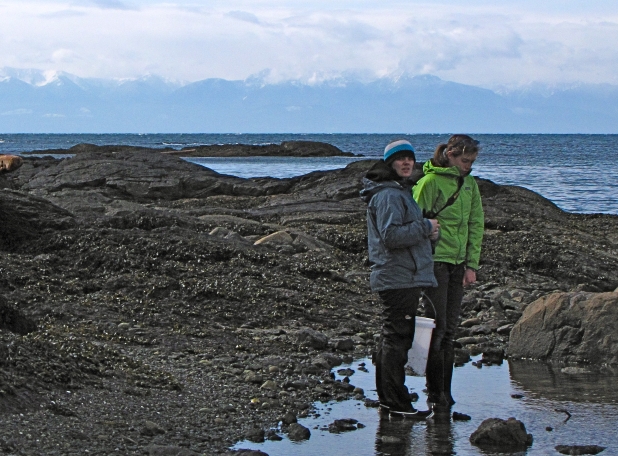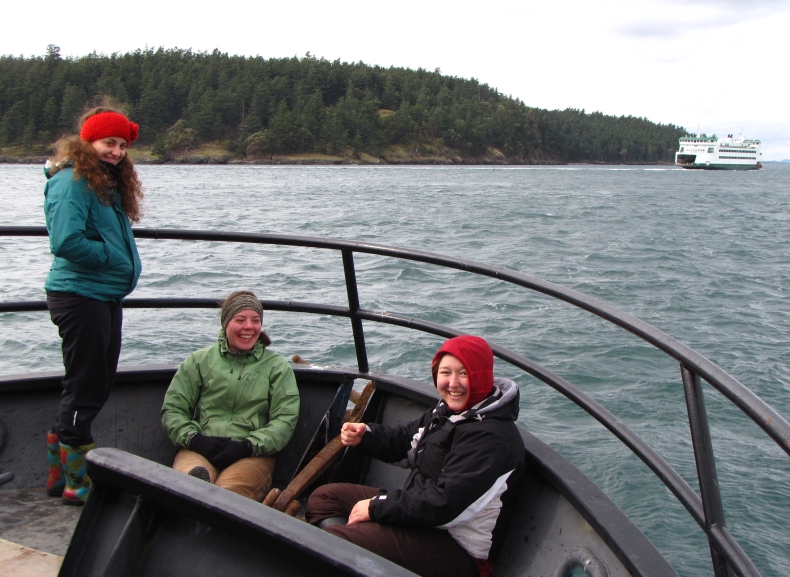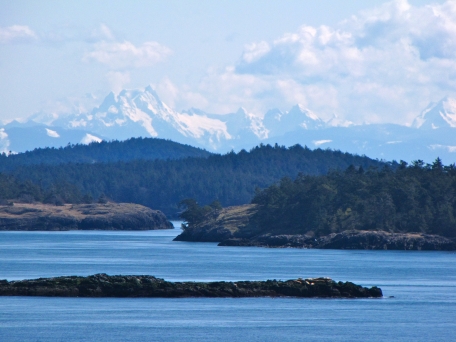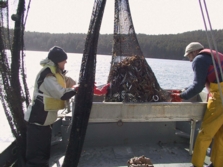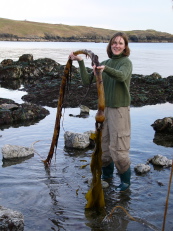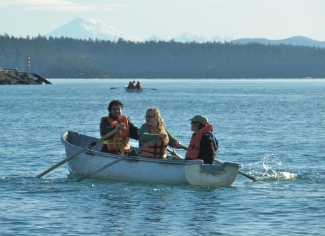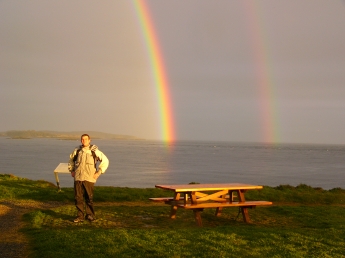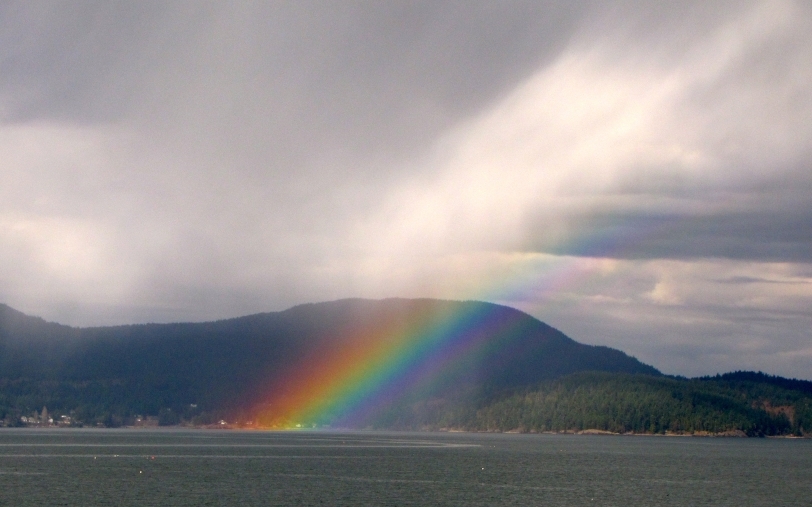
On the ferry to Friday Harbor
| LECTURES: This course studies life in the oceans from the intertidal
to the deepest trenches, with emphasis on anatomical, physiological, biochemical
adaptations to major biotic and abiotic environmental factors.
Bio 111 and 112 (or equivalents) are prerequisites.
A typical outline of lectures is:
I. ENVIRONMENTAL FACTORS: a survey of the major physical, chemical, geological,
and biotic factors and how they affect marine life
II. MARINE LIFE and III. MARINE ECOLOGY
IV. BENTHIC HABITATS: types of organisms in the intertidal, subtidal, and
deep-sea bottom habitats, and their major adaptations
V. PELAGIC HABITATS: types of organisms in the epipelagic and deep-pelagic,
and their major adaptations
VI. HUMANS & OCEANS: examination of the impact of human activity on marine
habitats and life. |
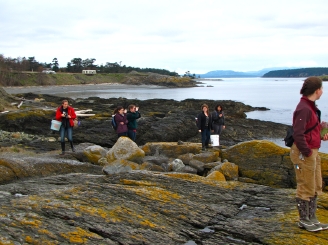
Studying rocky intertidal zonation (2013)
|
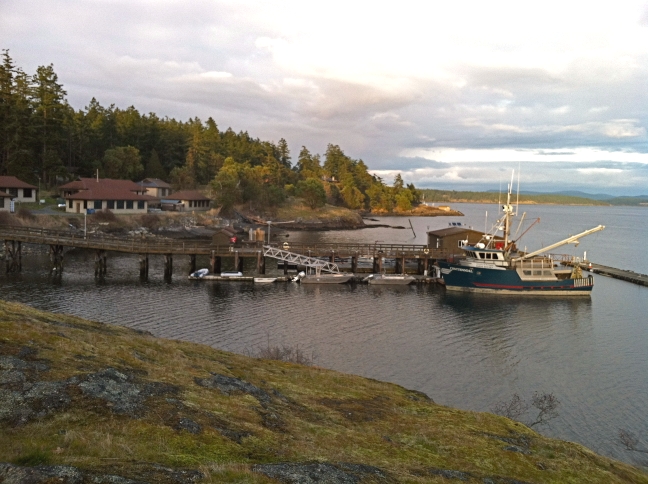
U. W.'s Friday Harbor labs, site of our usual field trip
|
THE FIELD TRIP
A week-long field trip is a separate course, usually held at the University
of Washington's Friday Harbor Laboratories on San Juan Island. There is
a fee up to $350 to cover food and lodging.
The field trip includes a day-long collecting trip on the UW research
ship, trips to rocky, sandy and muddy intertidal sites, rowing to kelp-bed
study sites, net collection of plankton in the day and night (with bioluminescence),
laboratory studies on organism adaptations, and individual projects.
2013 FIELD TRIP is the first week of
spring break in March. We will depart Mar. 10 and return on
Mar. 16. During the outbound and/or return trips, students can be picked
up/dropped off in the Eastgate/Bellevue (Seattle) area.
To the LEFT, RIGHT and BELOW are scenes from various field trips. |
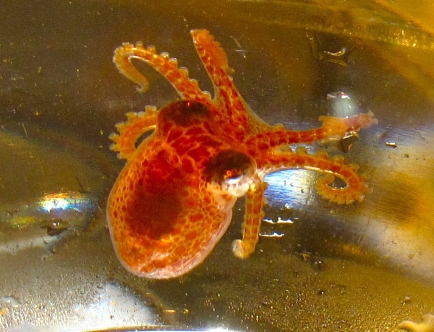
A baby octopus caught (and later released) from Friday Harbor bay |
